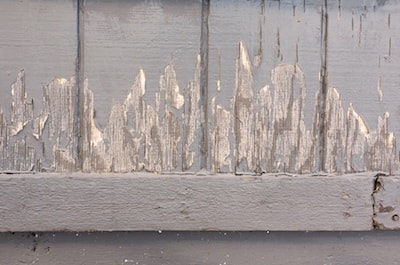5 Tips to Consider Before Repainting Home Siding
New paint can update and refreshed the look of a house when the siding is in good condition. The level of difficulty for repainting siding varies greatly depending on the home’s size and your abilities. Budget may also factor in. It’s important to note that the average national cost to paint a home exterior is around $2,700, according to HomeAdvisor.
When thinking about repainting your home's siding, consider the prep work needed, the cost of paint and supplies, the benefits of hiring a professional, and if the siding actually needs repainting. Weather is also a factor in your decision.
1. Learn to Identify Signs That It’s Time to Repaint Siding
On average, engineered wood siding usually requires repainting every 5 to 10 years as compared to wood siding, which usually needs repainting every 3 to 5 years. Vinyl siding also may be painted if the color has faded. Signs siding needs repainting include but are not limited to:
Peeling, flaking, bubbling or cracking paint. These are the most common visual signs and usually easiest to see. However, it’s always best to repaint before this happens.
Fading or sun-bleached areas. UV rays can fade paint. If fading has occurred in a shaded area of the home, look for water marks or drips. These could be signs of an issue with leaks and the vapor barrier.
Paint has changed color. Another issue caused by UV rays, paint without a UV protection ingredient can change from a neutral to an odd shade after extended sun exposure.

2. Know Your Limits: Hiring a Professional Painter vs. DIY
Painting professionals offer many benefits versus a DIY job by a homeowner. Professional painters have the right equipment, supplies, and know-how to complete the job correctly. This can help ensure the paint will last and look good for several years. Hiring a professional eliminates scaffolding rental and the purchase of other necessary supplies. Professional painters will often supply:
Ladders and/or scaffolding
Paint sprayer(s)
Paint roller and roller handle extensions needed for multi-level homes
Drop cloths
Painter’s tape
Scrapers
Sandpaper
Caulk
Paint pans and buckets
For a DIYer to purchase these items, it can add a considerable cost to your expense, and you might want to research this before you start.
3. Estimate Exterior Paint Cost Before Starting
Professional painters provide an exterior paint cost estimate based on the home's square footage. For example, a home measuring 500 to 1,500 square feet averages a cost range of $1,000 to $3,000. The larger the house, the higher the cost. This will be true for a DIY paint job as well. High-quality exterior paint also adds to the overall paint cost. A better quality paint may require fewer coats, which can save money over time. You may want to research this before you get started.
4. Prep Work is Important
Performing the right prep work before painting helps the paint adhere better to create a smooth finish and great-looking home. Before grabbing that pressure-washer, remember some siding, like engineered wood, is best hand-washed to avoid any moisture intrusion. Removing the dirt and grime is just the first step. You may opt to perform the rest of the prep yourself or leave it to professional painters. This typically includes scraping loose paint from engineered wood siding and other varieties (except metal), sanding, caulking, and applying a primer coat.
5. Check Weather Before Painting
Weather has the ability to affect an exterior painting project. Ideal conditions are in low relative humidity, cloud cover/overcast sky, and temperatures neither too hot or cold. Opt for a time of year that meets these conditions for the best results. Avoid exterior painting in hot, humid weather, during temperatures that near the freezing mark, and on any day with gusty winds.
Continue Reading
Resiliency Solutions
5 minIntroducing LP® SmartSide® ExpertFinish® Naturals Collection™: Nature-Inspired Beauty Meets Engineered Performance
We’re excited to introduce the LP® SmartSide® ExpertFinish® Naturals Collection™, a bold new addition to our trusted line of engineered wood siding and trim that delivers the warmth and beauty of nature with the advanced protection and performance builders and homeowners expect.
Sustainability Solutions
5 minBuilding a More Sustainable Future with LP Building Solutions
In today's world, sustainability is no longer just a buzzword, it's a blueprint for responsible living and smarter building. As the construction industry seeks ways to reduce its environmental footprint, LP Building Solutions is focused on providing innovative building materials for eco-conscious builders to help reshape what it means to build sustainably
Resiliency Solutions
5 minTop Exterior Design Trends for 2025 - Featuring LP Building Solutions Products
The design world is constantly evolving, and 2025 is shaping up to be a year of bold choices, natural aesthetics, and performance-driven materials. For builders, remodelers, and homeowners alike, staying ahead of these trends means combining beautiful design with dependable durability. That's where LP Building Solutions products shine, delivering both the visual appeal and the structural strength that modern builds demand.
Labor Solutions
5 minChoosing the Right LP® Structural Solutions Product for Your Build
When it comes to building strong, reliable, and high-performing structures, the materials you choose matter. At LP Building Solutions, we understand that every project, whether it's a single-family home or a multifamily development, requires structural components that meet your needs for strength, durability, and efficiency.